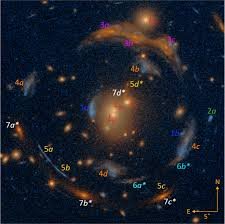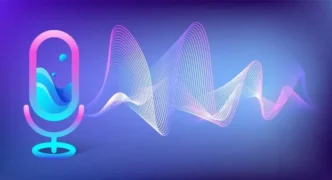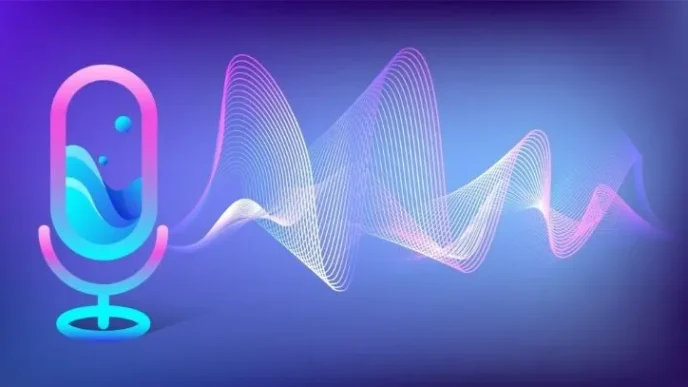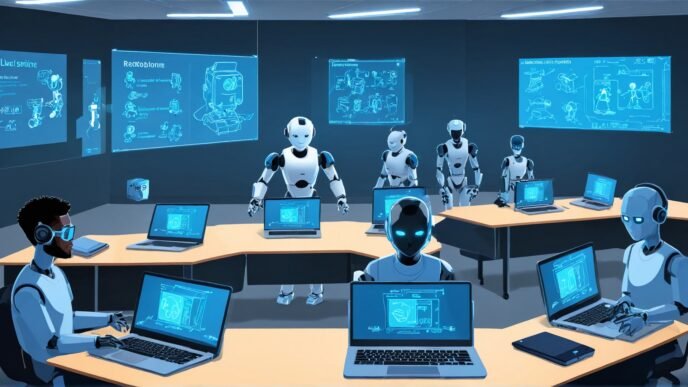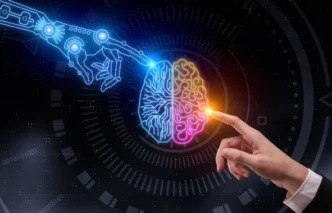Machine learning is no longer confined to predicting stock prices or optimizing search engines—it’s now being harnessed to tackle one of astrophysics’ long-standing challenges: detecting plasmoids, elusive blobs of plasma found in outer space.
A team of physicists at the Princeton Plasma Physics Laboratory (PPPL) has developed an AI-powered tool trained on simulated data that could revolutionize how scientists study magnetic reconnection—a powerful cosmic phenomenon with far-reaching implications for satellites, communications, and Earth’s electrical grids.
This breakthrough serves as a major step forward for astrophysics, blending cutting-edge machine learning techniques with theoretical physics. As I dug deeper into this research, it became clear that AI is becoming indispensable for solving the mysteries of the universe.
What Are Plasmoids, and Why Do They Matter?
Plasmoids are blobs of plasma formed during magnetic reconnection—a phenomenon where magnetic field lines break apart, violently reconnect, and release massive amounts of energy. This process occurs throughout the universe, from Earth’s magnetosphere to the Sun’s corona. Near Earth, reconnection can trigger a cascade of energetic particles that disrupt satellites and electrical grids, posing risks to modern communication systems.
One of the key questions physicists aim to answer is whether plasmoids can influence the speed at which magnetic reconnection occurs. Understanding this relationship could help us better prepare for the impacts of space weather events. However, detecting these elusive plasmoids in space is no small task, which is where machine learning steps in.
AI Trained on Simulated Data: A Novel Approach
The researchers at PPPL, led by Kendra Bergstedt and Hantao Ji, designed an AI-powered detection tool to sift through data from spacecraft flying through the magnetosphere, a region in space dominated by Earth’s magnetic field. What makes this AI project unique is that it was trained on simulated data, ensuring that the model can recognize plasmoids in messy, real-world conditions.
Bergstedt explains:“Compared to mathematical models, the real world is messy. We trained the program using data with the fluctuations you’d expect in actual observations to ensure it wouldn’t miss less-perfect examples.”
Instead of idealized shapes, the simulated training data contained deliberate imperfections to prepare the AI model for recognizing a variety of plasma signatures. This approach gives the program a realistic baseline, making it more likely to succeed when applied to real datasets from space.
How Machine Learning Is Transforming Plasmoid Detection
Here’s how the AI system works:
- Simulated Training Data: The program was trained on artificial datasets with non-ideal shapes, ensuring it can detect irregular plasmoids.
- Data from NASA’s Magnetospheric Multiscale (MMS) Mission: The AI will analyze data gathered by MMS spacecraft, which have been flying in formation through the magnetotail—a part of the magnetosphere ideal for studying reconnection.
- Domain Adaptation: The researchers plan to implement domain adaptation techniques, allowing the program to analyze datasets it hasn’t encountered before.
Ji highlights the power of AI in this context: “The best way to learn how to use a new tool is to actually use it. We don’t want to stand on the sidelines and miss an opportunity.”
Magnetospheric Research: A Perfect Middle Ground for AI
The magnetosphere provides a unique opportunity to study reconnection. Observing reconnection on the Sun limits scientists to distant measurements, while laboratory experiments with plasma are constrained by small scales. The magnetotail offers a sweet spot—a large, naturally occurring plasma that scientists can measure directly using spacecraft flying through it.
By applying AI to the MMS mission’s data, Bergstedt and Ji hope to analyze magnetic reconnection events in unprecedented detail. If successful, this program could lead to a deeper understanding of how plasmoids influence reconnection rates and energy distribution.
AI’s Expanding Role in Astrophysics
This research signals the growing importance of machine learning in fields beyond Earth’s atmosphere. Here are some key takeaways about AI’s expanding role in astrophysics:
- AI for Limited Data Scenarios: AI can extrapolate insights from small datasets, making it a powerful tool for studying rare astrophysical phenomena.
- Improved Forecasting of Space Weather: Better detection of plasmoids could help predict and mitigate disruptions to satellites and power grids caused by magnetic storms.
- Faster Data Analysis: With spacecraft like MMS generating enormous amounts of data, AI enables scientists to quickly sift through information and identify key events.
Challenges and Next Steps
While the AI program has shown promise, the researchers acknowledge that it’s still a work in progress. Bergstedt explains: “The methodology we demonstrated is mostly a proof of concept. We want to get the model working even better, apply it to real data, and see where it takes us.”
The next steps include:
- Implementing Domain Adaptation: Enhancing the model’s ability to analyze unseen datasets.
- Optimizing the Program: Making it more efficient and accurate for large-scale applications.
- Real-World Testing: Applying the program to data from NASA’s MMS mission to detect plasmoids in real-time.
My Take: A Game-Changer for Both AI and Astrophysics
From my perspective, this research is a breakthrough on multiple fronts. First, it highlights the versatility of AI, showing that machine learning can solve complex problems in astrophysics just as effectively as it does in other fields. Second, it exemplifies how collaboration between theoretical physics and computational science is pushing the boundaries of what we can achieve.
I believe that AI-driven research will become increasingly essential in understanding the universe. As AI models evolve, they will unlock new possibilities in space weather forecasting, satellite management, and planetary exploration. However, interdisciplinary collaboration will be key—physicists and data scientists must work together to optimize these tools for real-world applications.
Conclusion: A New Era of Discovery Powered by AI
As AI continues to revolutionize astrophysics research, the plasmoid-detecting program developed by PPPL is a powerful example of what’s possible. With AI tools becoming more sophisticated, we are on the brink of solving mysteries that have puzzled scientists for decades.
This breakthrough could pave the way for future discoveries, not just in space but in other areas of physics where large datasets and complex patterns need to be analyzed. In the coming years, AI will become indispensable to science, unlocking insights we never thought possible.
The cosmic game of hide and seek with plasmoids might soon come to an end—thanks to the fusion of machine learning and astrophysics.
